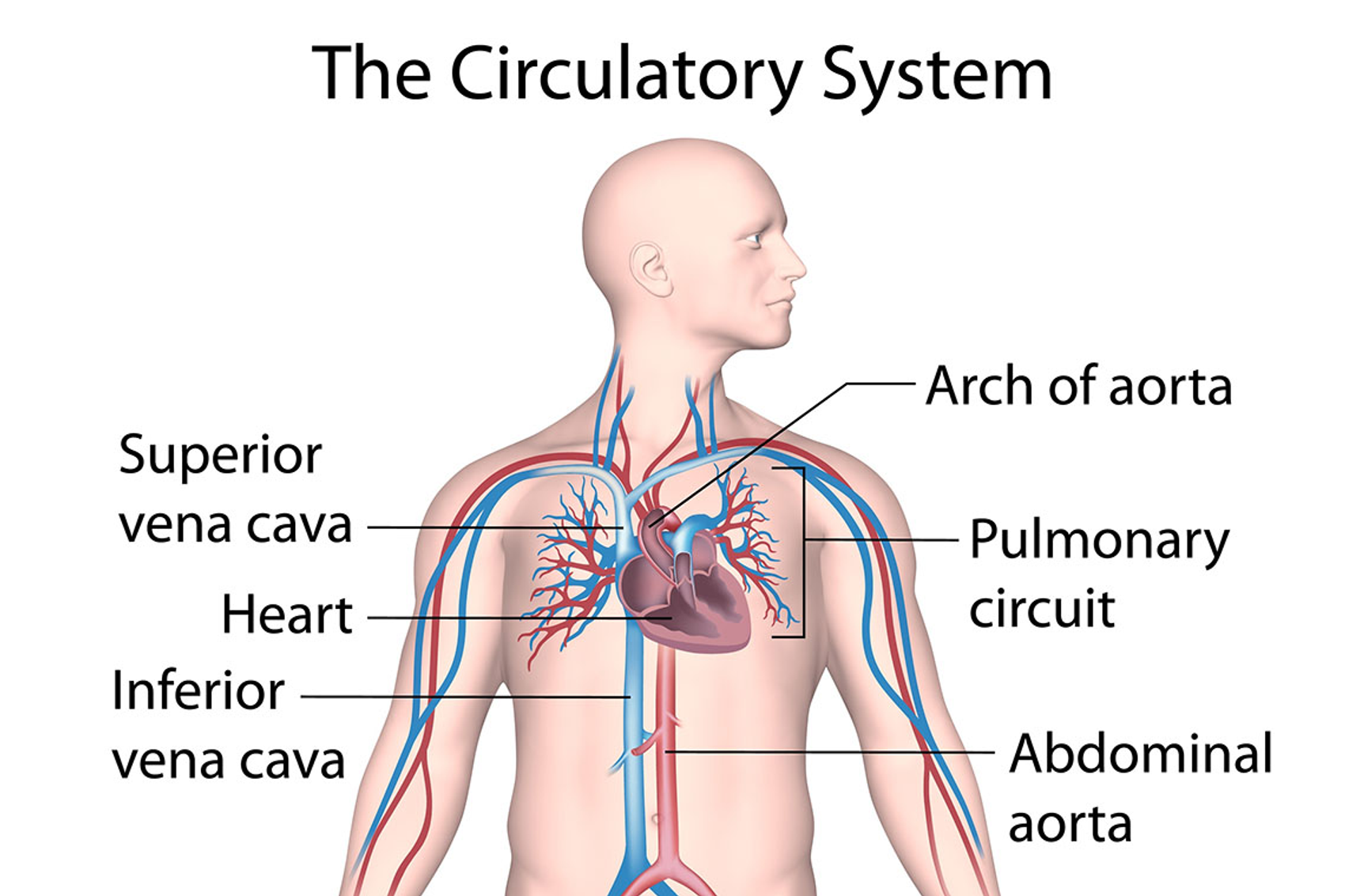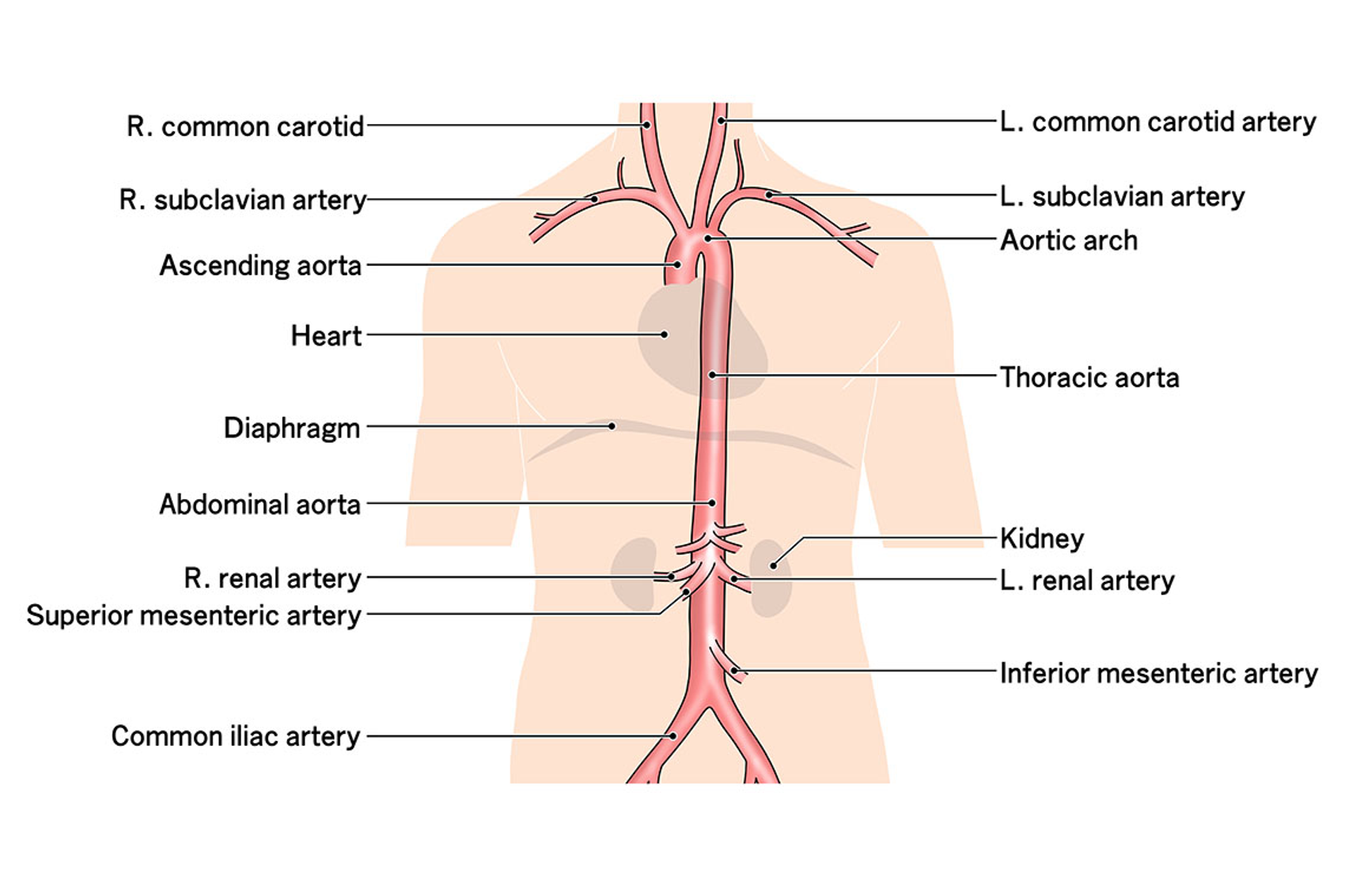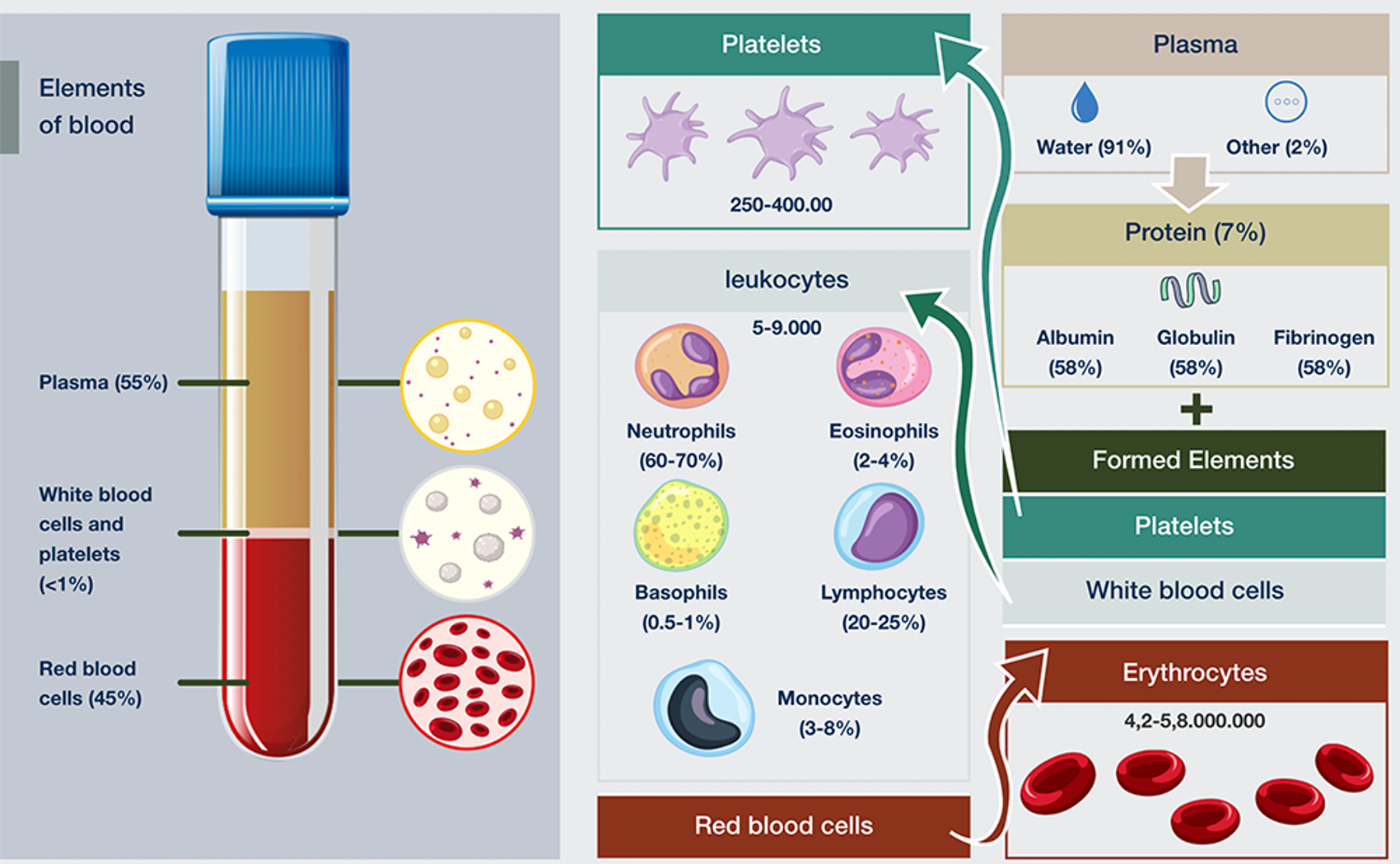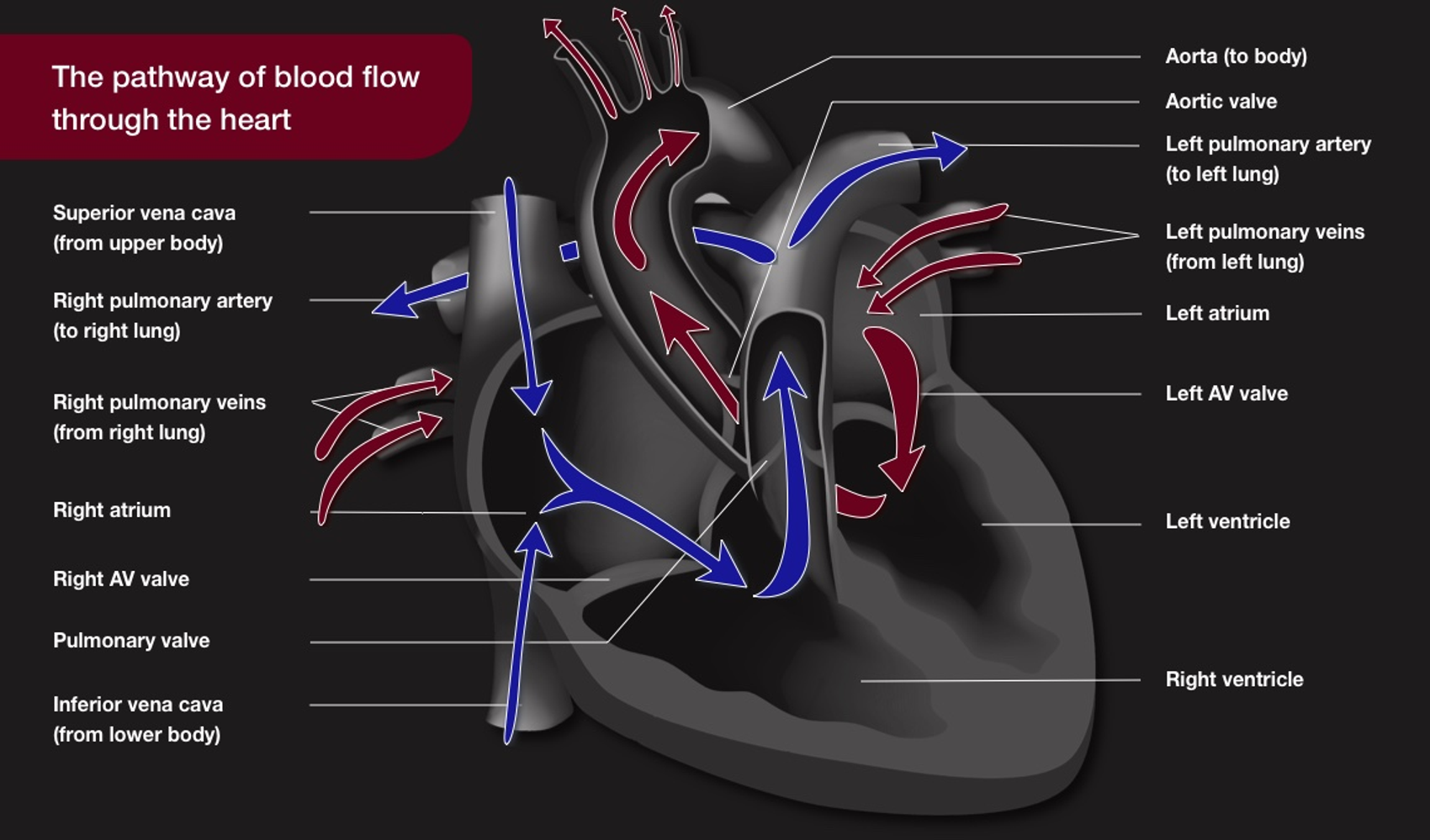Body Systems (Cardiovascular)
Basic structures of the human body
Within the human body, there are six levels of structural organisation. These range from the simplest level, the chemical level, through to the complex, whole and fully functioning organism, the human body.
Cells — the tiny structural units of every living things.
Building blocks of human body.
Smallest unit of life.
They perform all the activities necessary to maintain life, including metabolism, digestion, excretion and reproduction.
Tissues — a group of cells that have similar structure and that function together as a unit.
Epithelial Tissues — tissues that functions as covering
Connective Tissues — tissues that functions a supportive role
Nervous Tissues — tissues that controls the body
Muscle Tissues — tissues that controls the movement in the body
Organs — a group of tissues and can perform extremely complex functions..
Each organ is like a specialised centre that performs a vital activity no other organ can do.
Heart — organ that specialises the pumping of blood around the body
Lungs — organ that takes in oxygen and expels carbon dioxide waste
Kidney — organ that filters the blood
Stomach — organ that digests food
Cardiovascular system
The major function of the cardiovascular system is transportation.
Using blood as its transport mechanism, oxygen, nutrients, cell wastes, hormones and many other substances are carried to the cells of the body.
The beating heart and the blood pressure provide the force required to move blood around the body.
Cellular waste products are also transported to the appropriate organs for removal from the body.


Medical terminology relating to the cardiovascular system
Root word | Meaning (origin) |
|---|---|
Angi(o) | Vessel (Greek) |
Arter(o) Arteri(o) | Artery (Greek) |
Cardi(o) | Heart (Latin) |
Coron(o) | Crown (Latin) |
My(o) | Muscle (Greek) |
Thorac(o) | Chest (Greek) |
Vas(o) Vascul(o) | Vessel (Latin) |
Ven(o) | Vein (Latin) |
Medical terminology | Meaning |
|---|---|
Angina | Pain in the chest – symptom of coronary artery disease (CAD) |
Atherosclerosis | This is a build-up of plaque within the walls of the blood vessels |
Cardiologist | A person who studies the heart – the 'heart specialist' |
Carditis | Inflammation of the heart |
Cerebrovascular accident (CVA) | Stroke |
Coronary arteries | The arteries that encircle (like a crown) the heart muscle and supply it with blood |
Myocardial infarction | Heart attack |
Components of the cardiovascular system
Heart — the main component of cardio system.
It is a muscular organ that sits slightly to the left of central in the chest cavity, between the lungs.
It is made up of four chambers, two atrium and two ventricles.
While blood flows through the heart, the blood supply for the heart itself comes from the coronary arteries.
Arteries — These are blood vessels that have muscular walls and a smooth lining and carry blood away from the heart.
Aorta — It is the largest artery in the body.
Veins — blood vessels that carry blood toward the heart and have small valves to control the correct direction of the flow of the blood.
Capillaries — very small blood vessels at the ends of the arteries. The walls are thin to allow for nutrients and oxygen to pass into the cells, and waste products to pass back into the circulation.
Blood — a connective tissue and, although it is in a liquid form and is the delivery mode for oxygen and nutrients, it also aids in the removal of metabolic wastes and helps distribute hormones.
Blood
Blood highly specialised, with a non-living matrix of blood plasma comprising 55 % of total blood volume and the remaining 45 % consisting of living cells, called formed elements – these are red blood cells (erythrocytes), white blood cells (leukocytes), plasma and platelets (thrombocytes).

Plasma — A pale-yellow fluid that contains protein, gases and salts.
Examples of the proteins include albumin, antibodies and clotting factors.
These proteins assist the body to regulate fluid volume, protect itself from pathogens and prevent excessive blood loss.
Serum is the plasma minus the clotting factors.
Red blood cells (erythrocytes) — transport oxygen and carbon dioxide to and from body tissues.
They contain haemoglobin, the oxygen carrying substance that gives blood its red colour.
The average life span of an RBC is 120 days.
Bone marrow releases RBCs into circulation in immature form as reticulocytes. They mature into RBCs in about a day.
The spleen isolates the old RBCs and removes them from circulation.
Platelets (thrombocytes) — small colourless fragments split from cells in bone marrow.
They initiate contraction of damaged blood vessels to minimise blood loss, form haemostatic plugs in injured vessels and accelerate blood coagulation.
White blood cells (leukocytes) — have five different types and all participate in the body's defence and immune system.
RBCs and platelets function entirely within the blood vessels; WBCs act mainly in the tissues outside the blood vessels.
Basic Circulation of the Blood
In the adult circulation, deoxygenated blood from the body enters the right atrium of the heart. It passes through a valve into the right ventricle and from there is pumped through the pulmonary valve to the lungs.
In the lungs the blood is reoxygenated and returned to the left atrium of the heart. This is then pumped through a valve into the left ventricle and then pumped out the aorta via the aortic valve, for distribution through the body.
In order to pump blood around the body, the heart contracts rhythmically under the control of the autonomic nervous system and the intrinsic conduction system which is built into the heart tissue.
These contractions are referred to as the pulse/heartbeat and occur regularly between 60 – 100 times every minute.
With each heartbeat there is a force exerted by the blood on the walls of the arteries and this is referred to as blood pressure.
BP is recorded as two numbers, such as 120/80.
Systolic blood pressure — larger number, the pressure in the arteries as the heart pumps out blood during each beat.
Diastolic blood pressue — lower number, pressure as the heart relaxes before the next beat.

Cardiovascular changes
If there are no congenital heart abnormalities from birth, the heart usually functions quite well for a lifetime. When changes do start to happen, it may not be obvious.
One of the problems occurring within the cardiovascular system is atherosclerosis. This is where there is a build-up of plaque within the walls of the blood vessels and this may not be noticed for years.
Signs of Changes in Cardio System:
a high blood pressure (hypertension) >140/90
a low blood pressure (hypotension) <100/60
a fast heart rate >100 beats per minute
a slow heart rate <60 beats per minute
an irregular heart rate
feeling dizzy or faint
oedema of ankles and feet
Most of these changes are usually noted during a health check by the doctor. For this reason, it is important for people, especially as they age, to have regular health checks.
If the person is feeling dizzy or faint, has oedema of the ankles or feet, is complaining of chest pain, shoulder tip pain, pain in the jaw or down the left arm, these would need to be reported to the team leader or supervisor.
Changes related to ageing and disability cardiovascular
Changes related to ageing or disability | Impact on the person's well-being |
|---|---|
In ageing, the nervous system reacts more slowly to changes in posture and blood may pool in the lower limbs causing a drop in the blood pressure. | |
— (Marieb, 2015). | The person may feel dizzy when they get up quickly and this may result in a fall. |
People with developmental or intellectual disabilities may also experience issues with mobility leading to a greater degree of inactivity. They may also have problems accessing health services. | |
— (Wilby, 2019). | This leads to a higher risk of cardiovascular disease. |
In older age there is a decrease in bone marrow function, which means that there are less red and white blood cells. | |
— (Vafeas & Slatyer, 2021). | This may lead to anaemia and a lowered immune response resulting in a greater risk of infections. |
In ageing there are changes in the walls and the size of the blood vessels and the heart does not pump as effectively. | Oxygen and nutrient supply to the cells is compromised, there is reduced circulation which can lead to oedema (fluid in the tissues) in lower limbs and slow healing of wounds. |
Some modifiable lifestyle risk factors are more common in people with disability such as smoking which contributes to arteries becoming narrowed and reducing the blood flow to vital organs. | |
— (Wilby, 2019). | This increases the risk for cardiovascular disease and other conditions such as diabetes mellitus. |
Cardiovascular disorders and diseases
Congenital heart disease
A condition that is present at birth. In the case of congenital heart disease there are defects in the heart and/or related large blood vessels at the time of birth. Depending on the malformation the effects can range from mild to life-threatening.
Ventricular septal defect — a hole between the right and left ventricle of the heart and is the most common defect.
Patent ductus arteriosus — a connection between the pulmonary artery and the aorta (this is also normal before birth but should close just after birth).
Atrial septal defect — an opening between the right and left atria of the heart (while this is normal as a foetus it closes just after birth).
Coactation of the aorta — a narrowing of the descending aorta.
Tetralogy of fallot — the most serious of the heart defects and is a combination of four defects.
Congenital heart defects affect about half of the people who live with Down syndrome, the most common defects being atrioventricular defects.
Surgical correction of congenital heart defects usually occurs within the first six months of life and people may not experience any further issues. For some, there may be problems that still exist into adulthood so they will need regular checks of their heart.
Coronary artery disease
Coronary arteries — the blood vessels that supply the heart with blood.
Coronary artery disease (CAD) — is when the coronary arteries become narrowed due to a slow build-up of fatty deposits, called 'plaque' or 'atheroma'.
The plaque decreases the blood flow through the arteries and results in the myocardium (heart muscle) receiving decreased oxygen and nutrients.
If this condition continues without treatment it often results in a myocardial infarction (heart attack).
This is the most common death in Australia, as well as the major cause of disability.
Angina
Angina — a chest pain or discomfort caused by insufficient blood flow and oxygen to the muscle of the heart and is usually a symptom of coronary artery disease
Deep vein thrombosis — It is where a blood clot forms in a deep vein of the body, usually in the leg.
This can occur when a person has been inactive (as on a plane flight), had major surgery, trauma or been in bed for a long period of time.
Signs of this may include pain and swelling in the affected region although some people experience no signs or symptoms.
This is a serious condition and medical assistance should be sought promptly.
High cholesterol
Cholesterol — a fatty substance produced naturally by your body and found in your blood.
You can also get cholesterol from some foods. It is used for many different things in the body but causes health problems when there is too much of it in the blood.
Hypertension
Hypertension — a high arterial blood pressure where the pressure is >140/90. While it is a disease process in itself, it is also a risk factor for cardiovascular, cerebrovascular and kidney disease.
Some factors that relate to hypertension include the following:
Heredity
Obesity
Smoking
Diet
Age
Stress
High blood pressure usually does not give warning signs. An individual can have high blood pressure and feel perfectly well. The only way to find out if the blood pressure is high is to have it checked regularly by the doctor.
Varicose veins
Varicose veins — these are knobbly, twisted and darkish-blue in appearance.
They are most commonly found on the legs.
They are caused by faulty valves within veins that allow blood to pool.
Spider veins — these are smaller, visible veins and are closer to the skin surface.
They are mostly found on the legs or face.
Treatments for spider veins and varicose veins include sclerotherapy and surgery.
Maintain a healthy heart and circulation
Combinations of risk factors show the overall likelihood of having a heart attack or stroke in the next five years - this is known as the 'absolute cardiovascular disease (CVD) risk'.
The more risk factors a person has, the higher the risk of having a heart attack or stroke.
To learn some strategies to maintain a healthy cardiovascular system include:
eating a well-balanced diet
maintain a healthy body mass index (BMI)
avoid smoking
minimise alcohol intake
go to your GP and have regular health checks (e.g. blood pressure and cholesterol levels)
engage in regular physical activity.